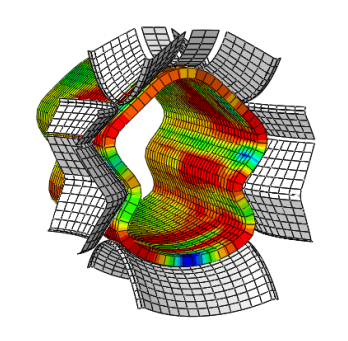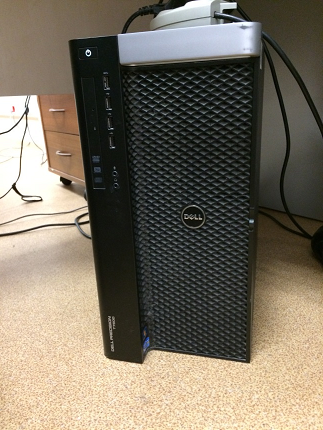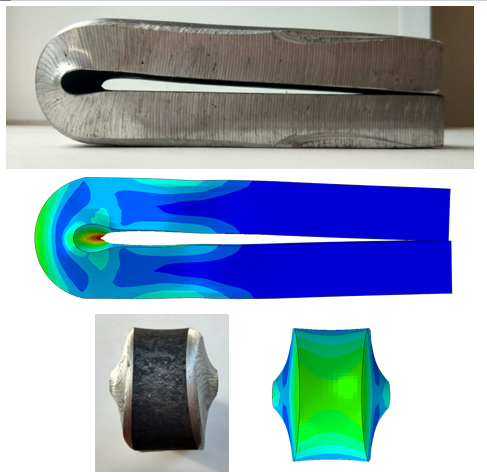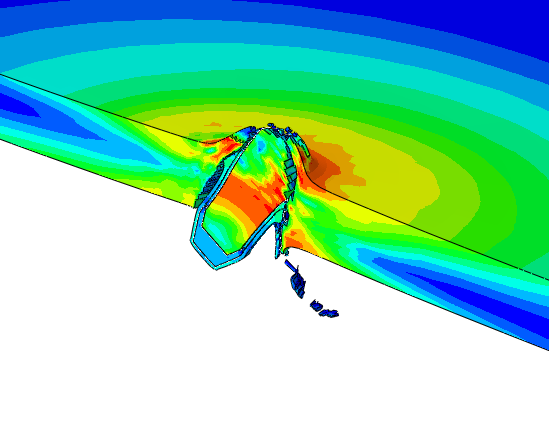Numerical modeling in a large industrial company

Hello, Habr and his dear readers!
I was lucky. I work in a large metallurgical company, where innovations are valued, there is modern equipment, a good laboratory base, and partners all over the world. But this does not mean at all that it was easy to introduce and make needed a new research tool. I want to tell why we took up this topic, what obstacles we faced, what results we managed to achieve and where we want to develop. I will pay special attention to the question of why, with numerical simulation, we came to our clients. Welcome under the cut!
The idea of using numerical modeling to increase the efficiency of rolled products production and its processing first came to us in 2010 as part of an exchange of experience with a metallurgical company from the United States. At that time, our overseas colleagues had a group of 4 engineers drawn from the automotive industry, and for more than 10 years they carried out projects for the big three American automakers - Ford, General Motors and Chrysler. The presence of a strong engineering team and the proposal of the supplier of steel solutions to reduce the mass and improve the safety of cars, was in the US one of the key procurement factors for car manufacturers.
For the next 5 years, we have proved and justified the need to introduce similar tools with us, the purchase of computers and software, and personnel training. These were the “dark times” in our project. Most often I had to answer such questions:
')
- there are enough companies and universities around that will do it quickly, efficiently and inexpensively, why do it inside the company?
- there are enough highly skilled experienced specialists in the market, why teach your employees?
- Our clients already have modern engineering centers, better software and specialists, how can we help them?
We systematically, week after week, dealt with these and similar issues, familiarized ourselves with market participants - software developers and distributors, universities, and customer engineering centers. The main conclusions that we drew:
- There are companies and specialists on the market who are ready to analyze any processes using numerical methods, but only a few of them are ready to change into work clothes, wear PPE, go with us to actual production, look at the process, discuss the problem statement, simplification options, suggest hypotheses. Even fewer companies are willing to take responsibility for the result of the implementation of the proposed solutions;
- there are no companies or professionals with extensive experience in the numerical simulation of ferrous metallurgy processes;
- investments in software, staff training, computers can easily pay for themselves in 2 years when compared with the potential cost of buying such services.
The main achievement of our “dark times” has become a huge network of acquaintances with potential external partners in Russia and abroad.
In 2015, we achieved our goal - we began to study, received our first computer, the Dell Precision T7600 with 8 cores and 16 GB of RAM on board, and the first license.

Our first settlement computer. He now works well for us, considers the processes of forming pipes and profiles - an example was in the title picture
When we first met our clients, we saw that there was a serious lack of information about the physical properties of materials. Our company has become the first in Russia and the fourth in the world steel producer, which systematically provides its customers with information on the special properties of products required for digital design and optimization of products.

The result of the bending test in the laboratory and the result of the simulation of this test
Already in the first 6 months of work, we were able to abandon two previously planned work with external partners and execute them independently. The economic effect amounted to several million rubles.

One of the first works is the model of testing steel rolled products for bulletproofness, allows, based on mechanical properties, to determine whether the material meets the requirements for bulletproofness, calculate the minimum allowable thickness of armor, optimize the product geometry to improve the protective properties
Our team currently has 4 highly qualified engineers in the field of numerical modeling of steel production and processing processes. We use the software of leading world developers Dassault Systemes, ANSYS, Autoform, we cooperate with 35 Russian and foreign partners, including software developers and distributors, engineering centers, universities. Among the mastered areas of modeling are the processes of hot and cold rolling, the production of special pipes and profiles, the calculation of building structures, the stamping of automotive parts and elements of roofing systems. One of the successfully mastered areas - flatness modeling of rolled products and internal stresses after rolling, straightening and cutting are done by only a few companies in the world.
Currently, there are a number of tasks in the work with great prospects for application. The model of fire tests will allow to reproduce the real tests that are necessary to obtain permission to use new profiles or structures during construction. This tool will give an opportunity to determine the result before the tests with high accuracy, to optimize the mechanical properties of the rolled section, the section of the profile and the package of fire protection to ensure the required levels of fire resistance. It is planned to use this model for the promotion of new types of products of our company, the development of new building materials, including together with the company's customers.
Modeling the transmission and absorption of vibration provides the opportunity to optimize the load-bearing structures of equipment operating under high vibration loads in order to increase reliability and increase the turnaround time. The pilot model is being developed as an example of the equipment we use. Improving the resistance to vibration can be achieved as a geometric design optimization, and the use of vibration-absorbing materials, including steel. A similar model can be used in the design of residential buildings on a metal frame in order to improve sound insulation while reducing the cost of sound insulation materials.
We know for sure that numerical modeling of processes is used or implemented in very many companies and we are sure that we have enough topics for discussion and knowledge sharing. We are ready to write more about our projects and the software used, to tell about the features of project management and knowledge sharing in our team, where and how we learn and much more. Please let us know in the comments if such a topic is interesting for the Habr community? We will be grateful for the questions, we will try to answer them.
Source: https://habr.com/ru/post/433094/
All Articles